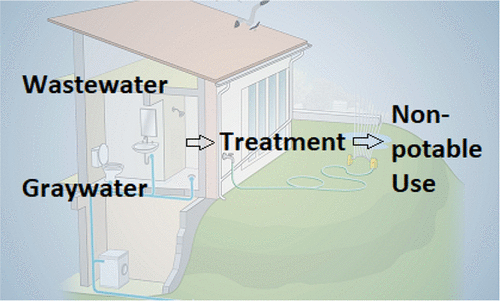当前位置:
X-MOL 学术
›
Environ. Sci. Technol. Lett.
›
论文详情
Our official English website, www.x-mol.net, welcomes your
feedback! (Note: you will need to create a separate account there.)
Enteric Pathogen Treatment Requirements for Nonpotable Water Reuse Despite Limited Exposure Data
Environmental Science & Technology Letters ( IF 8.9 ) Pub Date : 2020-10-12 , DOI: 10.1021/acs.estlett.0c00752 Mary E Schoen 1 , Michael A Jahne 2 , Jay Garland 2
Environmental Science & Technology Letters ( IF 8.9 ) Pub Date : 2020-10-12 , DOI: 10.1021/acs.estlett.0c00752 Mary E Schoen 1 , Michael A Jahne 2 , Jay Garland 2
Affiliation

|
Exposure factors (e.g., ingestion volume and frequency) are required to establish risk-based treatment requirements (i.e., log10 reduction targets (LRTs)) for enteric pathogens using quantitative microbial risk assessment (QMRA). However, data to characterize nonpotable exposure factors are sparse. We calculated graywater and wastewater nonpotable LRTs (corresponding to 10–4 infections per person per year) for uses missing detailed exposure data (including showering and decorative fountain) and across a range of exposure factors. The LRTs decreased linearly toward zero as the log10 transformed volume or the frequency of reuse decreased. When nonroutine exposure was included, representing either accidental ingestion from misuse or cross-connection between potable and nonpotable waters, the LRTs remained high, even as the routine ingestion volume decreased. Therefore, uses with small anticipated routine ingestion volumes (i.e., roughly <10–5 L), e.g., domestic indoor or decorative fountain uses, share common LRTs, and further refinement of the routine exposure is of limited value. Additional data to characterize nonroutine exposures and uses with high routine ingestion, e.g., showering, remain valuable to better estimate LRTs. These results will assist regulators in the selection of LRTs for nonpotable uses that lack detailed exposure factor characterizations.
中文翻译:

尽管暴露数据有限,但非饮用水回用的肠道病原体处理要求
使用定量微生物风险评估 (QMRA) 确定肠道病原体基于风险的治疗要求(即 log 10减少目标 (LRT))需要暴露因素(例如摄入量和频率)。然而,描述非饮用水暴露因素的数据很少。我们针对缺少详细暴露数据(包括淋浴和装饰喷泉)的用途以及一系列暴露因素计算了灰水和废水非饮用水轻轨(相当于每人每年10-4例感染)。随着 log 10转换量或重复使用频率的减少,LRT 线性减少到零。当包括非常规暴露(代表由于误用或饮用水与非饮用水之间的交叉连接而意外摄入)时,即使常规摄入量减少,LRT 仍然很高。因此,预期常规摄入量较小(即大约<10 id=128>–5 L)的用途,例如家庭室内或装饰性喷泉用途,共享共同的LRT,并且常规暴露的进一步细化价值有限。描述非常规暴露和频繁摄入(例如淋浴)的使用的额外数据对于更好地估计 LRT 仍然很有价值。这些结果将帮助监管机构选择用于缺乏详细暴露因素特征的非饮用用途的轻轨。
更新日期:2020-12-08
中文翻译:

尽管暴露数据有限,但非饮用水回用的肠道病原体处理要求
使用定量微生物风险评估 (QMRA) 确定肠道病原体基于风险的治疗要求(即 log 10减少目标 (LRT))需要暴露因素(例如摄入量和频率)。然而,描述非饮用水暴露因素的数据很少。我们针对缺少详细暴露数据(包括淋浴和装饰喷泉)的用途以及一系列暴露因素计算了灰水和废水非饮用水轻轨(相当于每人每年10-4例感染)。随着 log 10转换量或重复使用频率的减少,LRT 线性减少到零。当包括非常规暴露(代表由于误用或饮用水与非饮用水之间的交叉连接而意外摄入)时,即使常规摄入量减少,LRT 仍然很高。因此,预期常规摄入量较小(即大约<10 id=128>–5 L)的用途,例如家庭室内或装饰性喷泉用途,共享共同的LRT,并且常规暴露的进一步细化价值有限。描述非常规暴露和频繁摄入(例如淋浴)的使用的额外数据对于更好地估计 LRT 仍然很有价值。这些结果将帮助监管机构选择用于缺乏详细暴露因素特征的非饮用用途的轻轨。











































 京公网安备 11010802027423号
京公网安备 11010802027423号